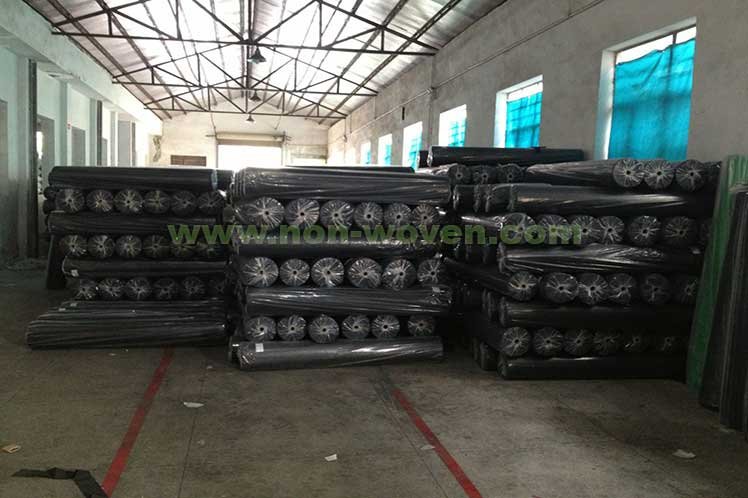Introduction
Geotextiles are permeable fabrics which, when used in association with soil, have the ability to separate, filter, reinforce, protect, or drain. Geotextiles are generally divided into two main categories: woven and non-woven. Each has its own advantages and disadvantages that make it more or less suitable for certain applications.
In this article, we will take an in-depth look at woven and non woven geotextile, their properties, and their uses. We will also compare and contrast the two types of geotextiles so that you can make an informed decision about which is right for your project.learn more(wikipedia)
What is a woven geotextile?
Woven geotextiles are made from intersecting warps and wefts (crosswise threads). The warps are the longitudinal yarns that run the length of the roll, while the wefts are the transverse yarns that run across the roll. The yarns can be made from a variety of materials, including polypropylene, polyester, or nylon. Woven geotextiles are strong and have a high tensile strength in both the longitudinal and transverse directions. They are also permeable, meaning that water and other fluids can pass through them.
Woven geotextiles are used for a variety of applications, including
- Drainage:
Woven geotextiles are often used to create a drainage layer beneath roads, parking lots, and other paved surfaces. By creating a drainage layer, water is able to quickly and efficiently drain away, reducing the risk of flooding and Freeze-thaw damage.
- Erosion control:
Woven geotextiles can be used to protect slopes and other areas susceptible to erosion. They work by allowing water to pass through while trapping sediment on the surface. This prevents the sediment from being carried away by runoff and helps to stabilize the soil.
- Reinforcement:
Woven geotextiles can be used to reinforce weak or unstable soils. They work by interlocking with the soil particles and providing a stable grid for the soil to rest on. This increases the overall strength and stability of the soil.
What is a non-woven geotextile?
Non-woven geotextiles are made from a variety of materials, including polypropylene, polyester, or nylon fibers that are entangled but not woven together. The fibers can be needle-punched, thermally bonded, or chemically bonded to form a strong, stable fabric.
Non-woven geotextiles are strong and have a high tensile strength in both the longitudinal and transverse directions. They are also permeable, meaning that water and other fluids can pass through them.
Non-woven geotextiles are used for a variety of applications, including
- Drainage: Non-woven geotextiles are often used to create a drainage layer beneath roads, parking lots, and other paved surfaces. By creating a drainage layer, water can quickly and efficiently drain away, reducing the risk of flooding and Freeze-thaw damage.
- Erosion control: Non-woven geotextiles can be used to protect slopes and other areas susceptible to erosion. They work by allowing water to pass through while trapping sediment on the surface. This prevents the sediment from being carried away by runoff and helps to stabilize the soil.
- Reinforcement: Non-woven geotextiles can be used to reinforce weak or unstable soils. They work by interlocking with the soil particles and providing a stable grid for the soil to rest on. This increases the overall strength and stability of the soil.
The benefits of woven geotextiles
Woven geotextiles have several advantages that make them well-suited for certain applications.
These advantages include:
- High tensile strength: Woven geotextiles have high tensile strength in both the longitudinal and transverse directions. This makes them ideal for reinforcing weak or unstable soils.
- Permeability: Woven geotextiles are permeable, meaning that water and other fluids can pass through them. This makes them ideal for drainage applications.
- Cost-effectiveness: Woven geotextiles are often more cost-effective than non-woven geotextiles. This makes them a good choice for projects on a budget.
The benefits of non-woven geotextiles
Non-woven geotextiles have several advantages that make them well-suited for certain applications.
These advantages include:
- High tensile strength: Non-woven geotextiles have a high tensile strength in both the longitudinal and transverse directions. This makes them ideal for reinforcing weak or unstable soils.
- Permeability: Non-woven geotextiles are permeable, meaning that water and other fluids can pass through them. This makes them ideal for drainage applications.
- Ease of installation: Non-woven geotextiles are often easier to install than woven geotextiles. This is due to their lighter weight and thinner profile.
Which one should you choose for your project?
The type of geotextile you choose for your project will depend on several factors, including the application, the soil conditions, the budget, and the installation requirements.
If you are looking for a geotextile that is strong and has high tensile strength, then either a woven or non-woven geotextile will be suitable.
If you are looking for a permeable geotextile, then again, either a woven or non-woven geotextile will be suitable.
The main difference between woven and non woven geotextile is their cost and installation requirements. Woven geotextiles are often more cost-effective than non-woven geotextiles. However, they can be more difficult to install due to their heavyweight and bulkier profile.
Non-woven geotextiles are often easier to install than woven geotextiles. However, they can be more expensive.
The best way to choose the right geotextile for your project is to consult with a geotextile expert. They will be able to assess your project requirements and recommend the best type of geotextile for your needs.
Conclusion
As we have seen, both woven and non woven geotextile have their advantages and disadvantages. In general, woven geotextiles are stronger and more resistant to tears, while non-woven geotextiles are more permeable. Non-woven geotextiles are also less expensive to produce. As a result, they are often used in lower-cost applications.

